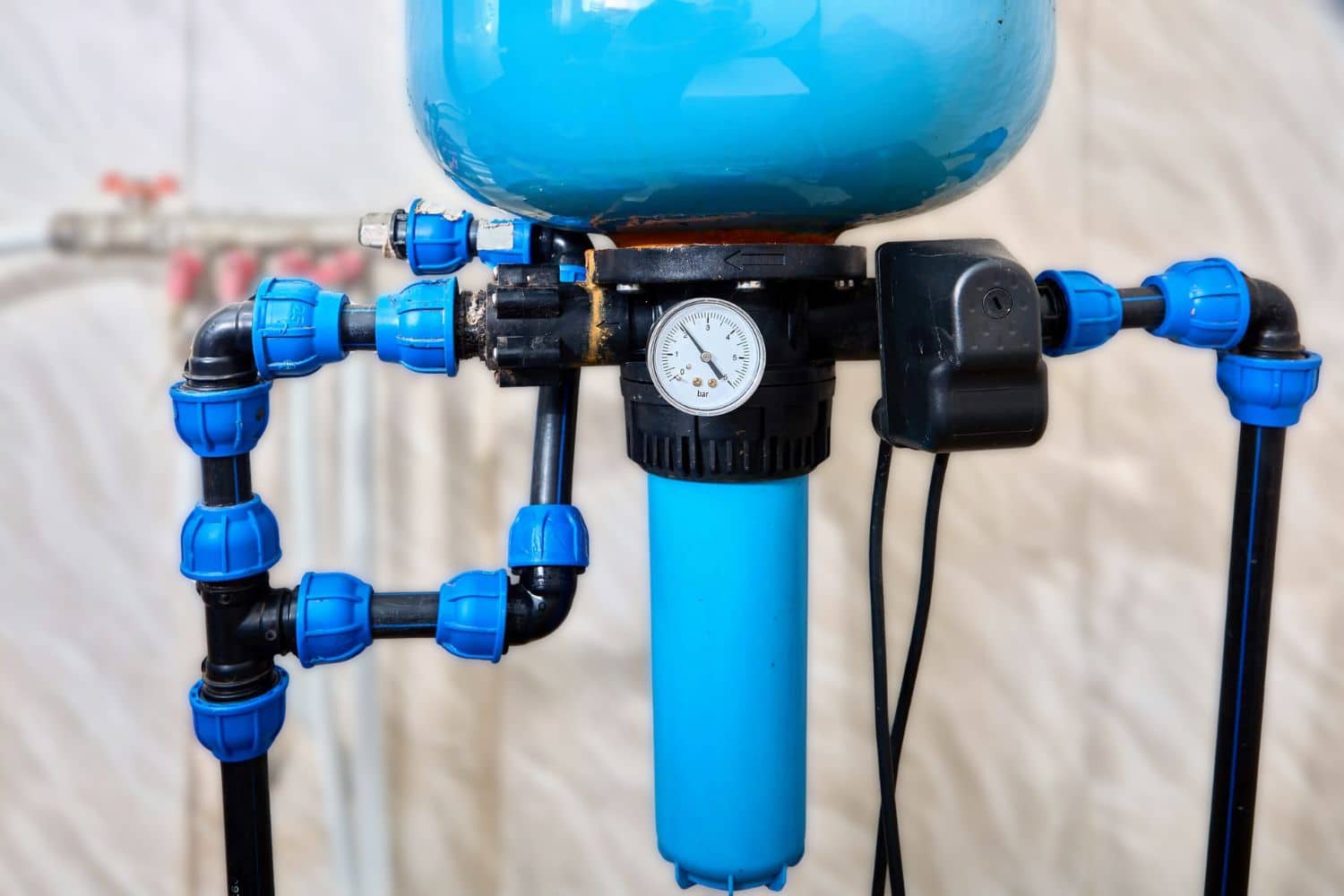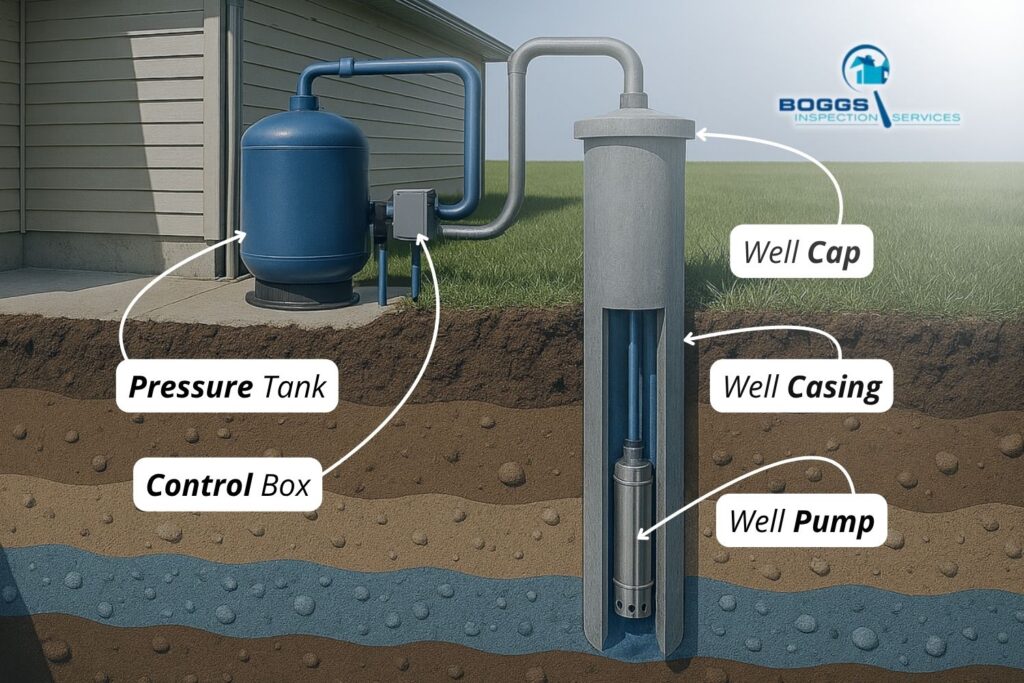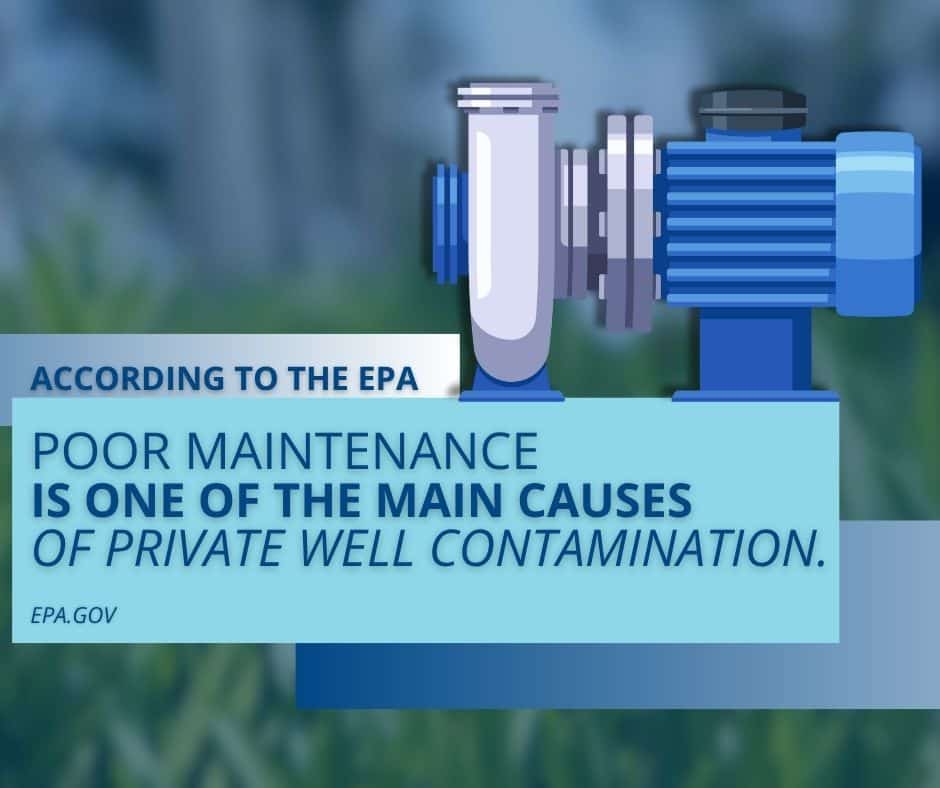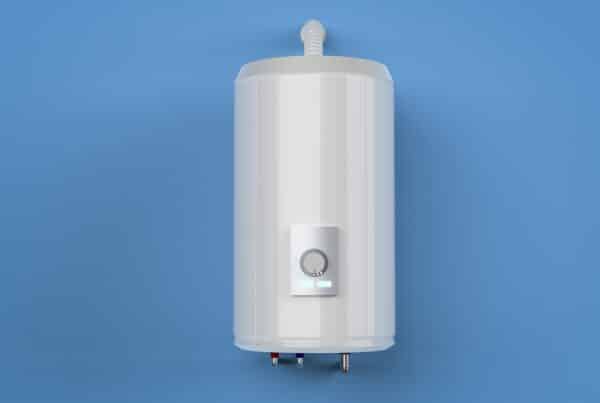
In any given U.S. state, thousands depend on private wells for water. In fact, Washington State reports that over 940,000 residents rely on private wells, especially in rural and suburban areas. If you’re buying or selling a home with a well, or already own one, it’s important to understand how the system should work.
Wells provide clean, safe water when they are properly cared for, but problems can go unnoticed until they affect health or home value. Let’s start with the basics and go from there!
The Key Parts of a Well System
A private well system puts in work to pull water from an underground aquifer and delivers it to your home. It’s made up of several important parts, each of which plays a role in keeping the water clean, safe, and flowing.

1. Well casing
The casing is a steel or plastic pipe installed in the drilled hole. It keeps the well from collapsing and blocks contaminants from entering the water supply.
2. Well cap
Located at the top of the casing, the cap seals the well and prevents surface contaminants, insects, and small animals from getting inside.
3. Pump
Most modern wells use a submersible pump, placed deep inside the well. It pushes water upward into the pressure tank and plumbing. Some older or shallow wells use a jet pump mounted above ground.
4. Pressure tank
The pressure tank stores water and helps maintain steady water pressure. It reduces the need for the pump to cycle on and off frequently, which extends pump life.
5. Pipes and wiring
Pipes carry the water from the well to your home. Wiring powers the pump and controls its operation.
How a Well Delivers Water
When you turn on a faucet, water is drawn from the pressure tank. As the tank pressure drops, it signals the pump to turn on and refill the tank.
The pump continues running until the tank reaches its target pressure, at which point the pump shuts off. This cycle ensures that water is available on demand while protecting the pump from constant operation.
Groundwater from wells provides about 30 percent of the nation’s drinking water overall.
Common Well Concerns Found During Inspections
During home inspections, professionals often identify well issues that could pose health or financial risks if left unaddressed.
These include:
• A damaged or missing well cap that allows contamination
• Evidence of surface water pooling near the well, which increases the risk of contamination
• Corroded or damaged well casing visible above ground
• Low water pressure that may point to a failing pump or pressure tank
• Signs of leakage or damage in the supply piping
• Poorly maintained areas around the wellhead, such as improper grading or vegetation that could attract pests
Problems like these can affect not just water quality, but also the reliability and safety of the system.
Well Water Quality and Why Testing Matters
One of the biggest risks with private wells is contamination. Unlike public water systems, private wells are not regulated under the Safe Drinking Water Act. It’s the homeowner’s responsibility to ensure the water is safe.
The Centers for Disease Control and Prevention recommends testing private wells for bacteria, nitrates, and other contaminants at least once a year.
In areas near agricultural activity, additional testing for pesticides or heavy metals may be wise.
Washington State Department of Health data shows that coliform bacteria is the most common contaminant found in private wells. This bacterium itself may not cause illness, but it signals that the water could be contaminated with disease-causing organisms.

Maintenance Basics for Well Owners
Routine care is the best defense against well problems. The Washington State Department of Health and the EPA recommend…
• Testing water for bacteria at least once a year
• Inspecting the well cap and casing for damage
• Keeping the wellhead clear of debris, animal waste, and chemicals
• Making sure the ground slopes away from the well to prevent surface water pooling
• Scheduling a professional inspection every one to two years, even if no issues are obvious
These steps protect water quality and help you catch small problems before they become costly repairs.
When to Call a Professional
From an inspector’s perspective, the well system is critical to check because issues can be hidden but serious. During an inspection, Boggs looks for visible problems and recommends additional evaluation when needed.
A licensed well contractor should be called if you notice:
• Cloudy water or sediment coming from your taps
• Water with an unusual taste or odor
• A sudden drop in water pressure
• Sputtering or air in your plumbing lines
• Water test results showing bacteria, nitrates, or other contaminants
• Damage to the well cap, casing, or nearby grading
For real estate agents and buyers, these concerns can delay transactions or add unexpected costs if they are not addressed early. That’s why Boggs works closely with agents to help identify well issues that need professional attention.
Why This Knowledge Matters
When it’s cared for and encouraged to work properly, your well is more than just a source of water. It’s a critical part of your property’s value and your family’s health.
The EPA points out that poor maintenance is one of the main causes of private well contamination. A well that is properly designed, maintained, and tested protects you from expensive repairs and potential health hazards.
In addition, buyers who understand how wells work are better prepared to make smart decisions when purchasing a property with a private water source.
Conclusion
How does a well work? Private wells provide reliable water when they are properly maintained.
Understanding how yours works and staying on top of inspections, testing, and basic care can help prevent problems and protect your investment.
Boggs Inspection Services is here to help homeowners, buyers, and agents identify well system concerns so that they can be addressed before they lead to bigger challenges.



